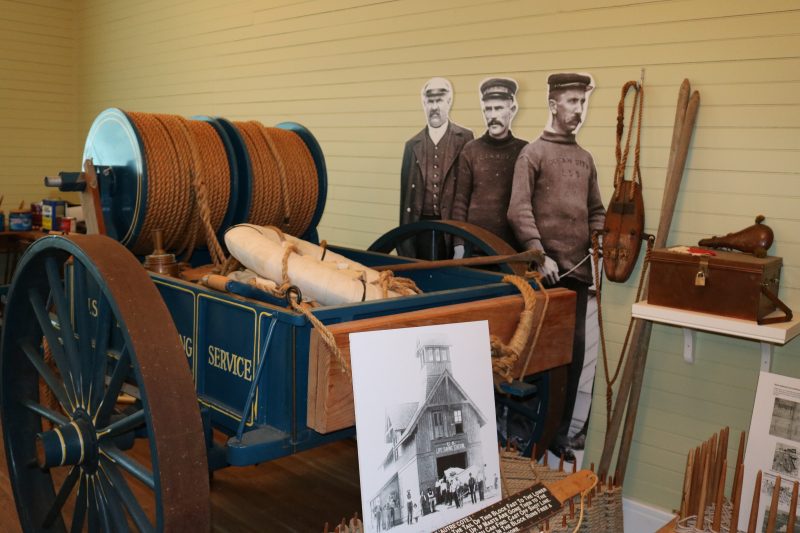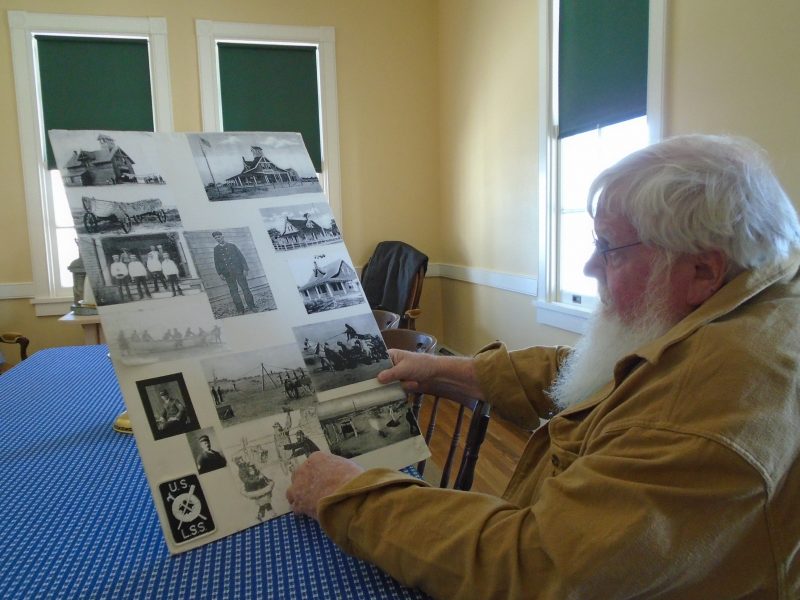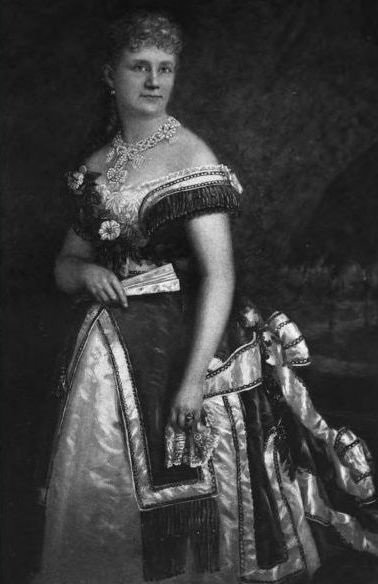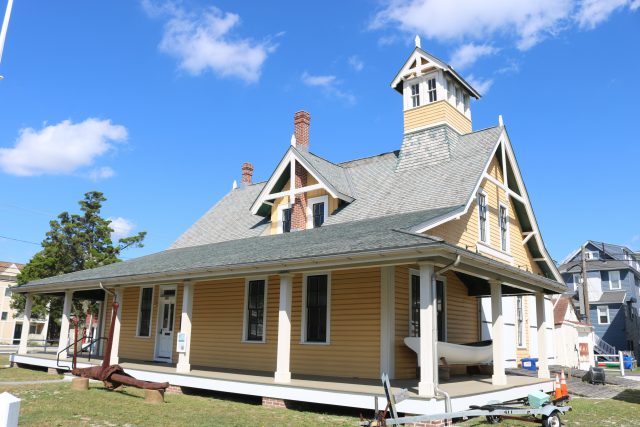By MADDY VITALE
The latest in a series of videos showcasing Ocean City’s historic U.S. Life Saving Station 30 is available to view online.
It features the invention by a woman, Martha Coston, of the Coston Flare. The flare, patented in 1859 which is still used today, signals those at sea of dangerous conditions and other pertinent information. It was also used during the Civil War by the U.S. Navy, according to historians.
And the video not only highlights the accomplishment of Coston, but of three local women who helped create the video released in March.
“It happens to coincide with Woman’s History Month and I think it is a great story,” Martin Fiedler, of Just Right TV Productions, who is also an important part of the video series, said.
Fiedler created the video series working with historian and Life Saving Station curator, John Loeper over the last year.
The videos provide a look at the important role the Life Saving Station played in history and what — and who– contributed to its success.
Video courtesy of Martin Fiedler, Just Right TV Productions
For the latest video, Maryann Pionegro-Smith did the voiceovers, Elizabeth Kaminsky wrote the script and Gabriella Wyand handled the editing.
Fiedler noted that the women did a phenomenal job on the video.
Pionegro-Smith, of Ocean City, is a member of the Historic Preservation Commission. She does voiceover work professionally and has worked on several of the other videos for the Life Saving Station.
The latest video, she said, had particular significance for her because it was a collaboration with other women.
“It is wonderful and I am honored to be a part of this project,” she said, adding that she hopes people will view the video and see the important role of Martha Coston in history.
She pointed out that kiosks are set up at the museum for visitors to watch the videos, but that the COVID-19 pandemic forced the shutdown of the building, like so many other public places due to crowd restrictions.
Pionegro-Smith said she knew she wanted to be a part of the video production after watching Fiedler videoing Loeper giving a talk in 2018 about the ship the Sindia, which ran aground in Ocean City.
“I thought it was wonderful that they were capturing the talk,” she said of the video for the lecture on the Sindia. “I wanted to put myself out there for free to help them and be the voiceover person for future videos.”
The rest — is history.

For Elizabeth Kaminsky, of Ocean City, is an author and an instructor at Drexel University in Philadelphia.
She said it was only natural that she would want to be a part of the video featuring a strong woman.
“Martin approached me and showed me the episodes that had been finished and the episodes he had planned,” Kaminsky detailed. “He and John (Loeper) spoke about different stories they wanted to tell.”
She listened to three or four hours of raw footage of Loeper telling stories, including about the Coston Flare.
“The Martha Coston story really fascinated me,” Kaminsky said. “I I dug into the research and tried to come up with a script.”
While she is an instructor at Drexel, Kaminsky said writing is her “first love.”
“I did a lot of historical research,” she added. “The story really interested me. And story with a strong female lead is a favorite of mine.”

While two of the women are veterans in their crafts of voiceovers and writing, Wyand, 24, of Upper Township, just graduated from Savannah College for Art and Design, where she studied television production.
The Ocean City High School graduate did an internship with Fiedler this past year, which included editing the Martha Coston video.
“When I reached out to Martin for my internship for school he brought up this project and said I would be a good fit to work on it,” Wyand explained. “After he told me about it, I looked at a bunch of the videos on the museum’s website that he did already.”
She knew it was the right project for her.
“I thought it was so interesting and the Life Saving Station is so close to where I live and where I went to school,” Wyand said. “I feel proud that I was able to work on such a cool project.”
Installments of the video series providing an overview of the U.S. Life Saving Service, its men, and the station in Ocean City, can be found at the Station’s website at uslifesavingstation30.com. Donations may also be made on the website.








